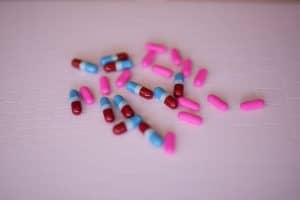
WHO releases list of bacteria that pose greatest threat to humankind
pharmafile | February 28, 2017 | News story | Research and Development | WHO, antibiotic resistance
The World Health Organisation (WHO) has published a list of the 12 bacteria that are thought to present the largest threat to humankind moving into the future. The particular bacteria that appear on the list are identified as being dangerous due to their ability, or increasing ability, to resist current antibiotic.
The list can be viewed as a call to action for the world to address the increasing threat of antibiotic resistance: “This list is a new tool to ensure R&D responds to urgent public health needs,” says Dr Marie-Paule Kieny, WHO’s Assistant Director-General for Health Systems and Innovation. “Antibiotic resistance is growing, and we are fast running out of treatment options. If we leave it to market forces alone, the new antibiotics we most urgently need are not going to be developed in time.”
The reference to ‘leaving it to market forces’ can be understood as an indirect reference to the pharmaceutical industry. At the moment, the major spending done on R&D is done by the pharmaceutical industry in the quest for the next blockbuster drug. However, in the case of antibiotic resistance, there isn’t the same profit to be made.
If any drug were to be developed, it would be used as a one-time or short-duration treatment that would not guarantee a pharmaceutical company long-term profits. The pharmaceutical industry makes it money primarily on those conditions that are chronic and treatments that are absolutely effective have a short shelf life – as Gilead has found with its Hepatitis C treatment.
Instead of being a call to the pharmaceutical industry, WHO has timed the release of the list just before the G20 meeting – where antibiotic resistance, and the threat it poses to human health, is predicted to be on the agenda. It may then be public-sector researchers that will be relied upon to take the lead unless governments can find ways to incentivise the private-sector to see the worth in this global health challenge.
The full list, as arranged by WHO:
Critical priority:
Acinetobacter baumannii, carbapenem-resistant
Pseudomonas aeruginosa, carbapenem-resistant
Enterobacteriaceae, carbapenem-resistant, ESBL-producing
High priority:
Enterococcus faecium, vancomycin-resistant
Staphylococcus aureus, methicillin-resistant, vancomycin-intermediate and resistant
Helicobacter pylori, clarithromycin-resistant
Campylobacter spp., fluoroquinolone-resistant
Salmonellae, fluoroquinolone-resistant
Neisseria gonorrhoeae, cephalosporin-resistant, fluoroquinolone-resistant
Medium priority:
Streptococcus pneumoniae, penicillin-non-susceptible
Haemophilus influenzae, ampicillin-resistant
Shigella spp., fluoroquinolone-resistant
Ben Hargreaves
Related Content

WHO recommends new vaccine for prevention of malaria in children
The World Health Organization (WHO) has announced that it has recommended a new vaccine, R21/Matrix-M, …

WHO releases Medical Product Alert for contaminated cough syrup
The World Health Organization (WHO) has shared a Medical Product Alert for an additional contaminated …

Scientists use AI to find new antibiotic to fight superbug
Scientists at McMaster University and the Massachusetts Institute of Technology (MIT) have utilised artificial intelligence …








